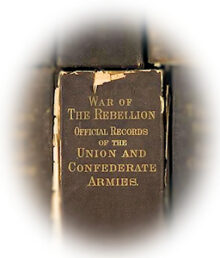FORT SUMTER, March 6, 1861.
(Received A. G. O., March 9.)
Col. S. COOPER, Adjutant-General U. S. Army :
COLONEL: I have the honor to report that a very large re-enforcement was landed last night at Cummings Point and bivouacs near No. 10. This morning it was marched out of sight, around the point of the island. Yesterday the three other guns were mounted in No. 10, thus completing its armament of four heavy pieces. They continued working yesterday at the places mentioned in my report, and are still so occupied to-day. A party has also been at work this morning on the Fort Moultrie glacis. Everything indicates activity and determination.
I had the honor to present in No. 58 my opinion of the strength of the army which will be necessary to force an entrance into the harbor. The presence here, as commander, of General Beauregard, recently of the U.S. Engineers, insures, I think, in a great measure the exercise of skill and sound judgment in all operations of the South Carolinians in this harbor. God grant that our country may be saved from the horrors of a fratricidal war!
I am, colonel, very respectfully, your obedient servant,
ROBERT ANDERSON,
Major, First Artillery, Commanding.
—–
FORT SUMTER, S.C., March 6, 1861.
General Jos. G. TOTTEN,
Chief Engineer U.S.. Army, Washington, D.C.:
GENERAL: I have the honor to report that during the day, and especially towards night, unusual activity was observed among the South Carolinians around us. Several steamer loads of men were landed on Cummings Point. The number was greater than the arrangements for shelter, apparently, for I observe quite a large number grouped about their bivouac fires this morning. Their suffering must have been considerable during the night, for the weather suddenly changed from the warm temperature of the preceding days to a high degree of cold for this climate, the wind blowing fresh from the north.
I learn that portable hot-shot furnaces have been furnished to several, and probably all, of the batteries. The mortar battery on James Island, south of Fort Johnson, is armed, but the number of mortars is not ascertained. The magazine in the flank of this battery is also finished. The mortar battery on Sullivan’s Island, west of Fort Moultrie, is also armed.
All the batteries on Morris Island are armed. The guns range from 32-pounders down, with the exception of the iron bomb-proof, which is (I think, from all reports and observations) armed with 8-inch columbiads–three of them.
The raft does not meet expectations. It is being covered with railroad strap-iron instead of the T rail. This has a cross-section of about three-fourths or one inch by two inches or two and a half inches. They are now ironing the top portion, the front not being yet commenced. Two 8-inch columbiads are lying on the wharf ready to be put on board. I do not think this floating battery will prove very formidable.
We have not yet received the inaugural address of President Lincoln, although it is reported from town that it is coercive in its character, and that much excitement prevails.
Very respectfully, your obedient servant,
J. G. FOSTER,
Captain, Engineers.
